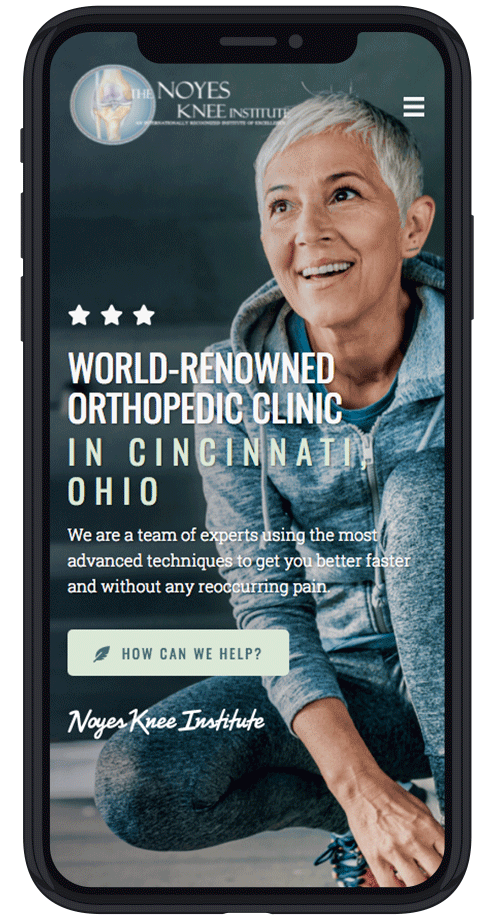Published On
Category
If you or a loved one are considering having knee surgery, you may be concerned about a post-operative stroke. You can talk to your knee surgeon about the risk of a stroke after the surgery and how to recognize the warning signs. Dr. Noyes of Noyes Knee Institute will review the risks of your knee surgery before scheduling your treatment.
5 Warning Signs of a Stroke
A study was conducted on all patients undergoing total hip and knee arthroplasty between 1997 and 2013. Research showed an increase in the risk of stroke in patients who underwent these procedures. Risk factors include advanced age, obesity, female sex, smoking, high cholesterol, diabetes, and high blood pressure. If you can identify the warning signs of a stroke, you can get help quickly and avoid further damage. Here are some of the most common warning signs of a stroke:
- Difficulty with Speech
One of the most obvious signs that someone is having or has had a stroke is if their speech is different. Their speech may be slurred and difficult to understand. You may also notice that they can’t think of their words when trying to speak. Their words may even become gibberish and not make sense. When you talk to them, they may seem confused and disoriented. They may have difficulty understanding what you tell them.
- Muscle Weakness and Paralysis
A person who has suffered a stroke may feel weak on one side of the body. Sometimes paralysis is obvious, like being unable to move a leg or arm. In these cases, they may be unable to raise their arm all the way or hold objects in one hand. In other cases, the muscle weakness may be more subtle. The person may stumble when they walk, complain of a sensation of pins and needles in a limb, or one side of their face may droop. If you’re concerned about a possible stroke, you can ask the person to smile. If one side of the smile is lower than the other, it can indicate a stroke. It’s easy to overlook weakness in a limb after knee surgery, but take note if it’s different than what Dr. Noyes tells you to expect during recovery.
- Problems Walking
Some people who suffer a stroke may still be able to communicate and talk with you but have difficulty walking. They may lose their balance more easily than usual when standing or walking. Even if you can’t see apparent signs of walking problems, the person may complain of weakness in one leg. They can often have weakness in their arm on the same side of the body. If this weakness develops suddenly and not after strenuous exercise, you may want to check for other signs of a stroke or talk to your doctor. You can expect difficulty walking after knee surgery, but it should improve over time. If your ability to walk worsens instead of improves, or if it becomes difficult months after surgery, you may want to discuss the situation with your knee surgeon.
- Difficulty Seeing
Another warning sign of a stroke is difficulty seeing and vision changes. The person may complain about seeing double or having blurry vision. They may even lose sight in one or both eyes. As people get older, it’s normal for their vision to change. These changes are gradual, usually happening over months or years. Decreased vision from a stroke will come on suddenly.
- Severe Headache
Some strokes occur with a severe headache. These headaches are usually more intense than other headaches and can mimic a severe migraine. The headaches may be accompanied by vomiting and nausea. If you don’t know of any trigger for the headache, like dehydration or sleep deprivation, or it feels worse than other headaches you’ve experienced, you may want to inform your doctor.
FAST Stroke Protocol
If you suspect a loved one has suffered a stroke, immediate treatment is necessary to reduce the risk of long-term brain damage. The stroke team of the University of Cincinnati developed the stroke protocols that are in use today. They are one of the leading institutions around the world for stroke treatment.
FAST is an acronym designed to help you remember the protocols for stroke. It stands for face, arm, speech, and time. Look for Facial drooping, check for Arm weakness, take note of any Slurred speech, and realize that it’s Time to call 911 if these symptoms are present. Getting help quickly after a stroke can minimize the potential for permanent tissue damage. Taking action at the first signs of a stroke can also prevent the stroke from being fatal.
Talk to Your Knee Surgeon About the Risk of Stroke
Don’t let the fear of a stroke keep you from getting the knee surgery you need to become more mobile and experience less pain. When you talk to your knee surgeon about the risks associated with surgery, they can alleviate your worries and provide you with preventative tips. Dr. Noyes is an experienced and well-respected surgeon who has performed countless surgeries. He will discuss potential risks and create a personalized plan for a successful and safe recovery. To find out more about your surgery options and how treatment can help your knees, contact the Noyes Knee Institute.

